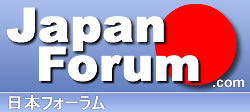| Nyororin |
07-07-2008 11:40 PM |
Quote:
Originally Posted by jrocka83
(Post 530508)
Hirigana was devoloped for woman back in the day. Woman in Japan where not allowed to write in kanji. But now Hirigana is use for some adjetives like Oishii{Tasty} お(O)い(I)し(SHI)い(I) And is also used for particles like waは and gaが.
|
That`s not quite right. Hiragana was developed as an improved way of writing, as prior to that sounds in Japanese were simply assigned to specific Kanji, making writing a single word quite a task. The Hiragana were simplified versions of the Kanji. They weren`t designed for women at all, but to be an easier and faster way to write - a sort of shorthand, really - to be used as a replacement for the former writing system. They caught on with women first, who often didn`t have access to the same levels of education as men so found the simplified versions easier to remember and more familiar. It took longer for them to gain wide popularity because most people didn`t want to switch over from the writing style they knew to one that looked so simple. Plus, older texts and books were all written in the older style, so it was still necessary to study it. For women who weren`t studying them in the first place, that wasn`t an issue. They did however often study classical Chinese cursive script as an art, and Hiragana was derived from this.
Quote:
The average Japanese person knows about 40,000 charecters, that is how much you need to know to read the news paper in Japan.
|
Umm, last time I checked the newspaper was limited to about 2000 (the Joyo and a few specialty characters). Trust me, there is no way an average Japanese person knows anywhere close to 40,000. Even if you include all the specialized name Kanji, you still don`t even hit 3000. The 40,000 sounds a lot more like Chinese. |

